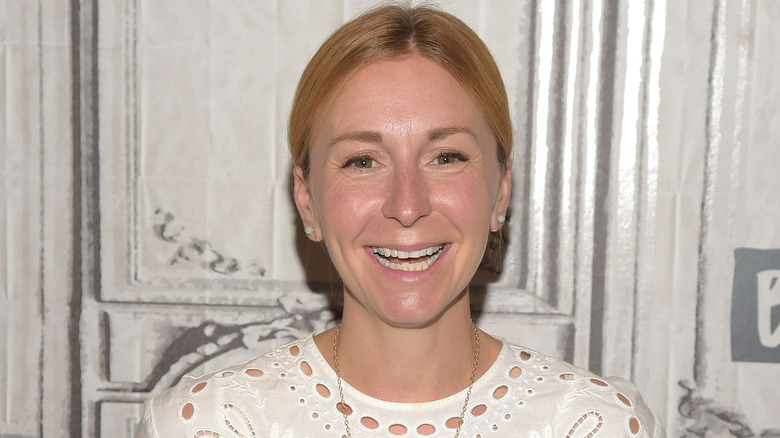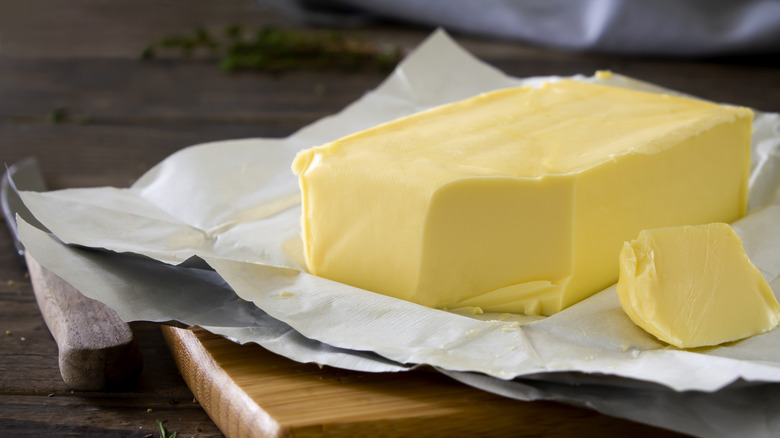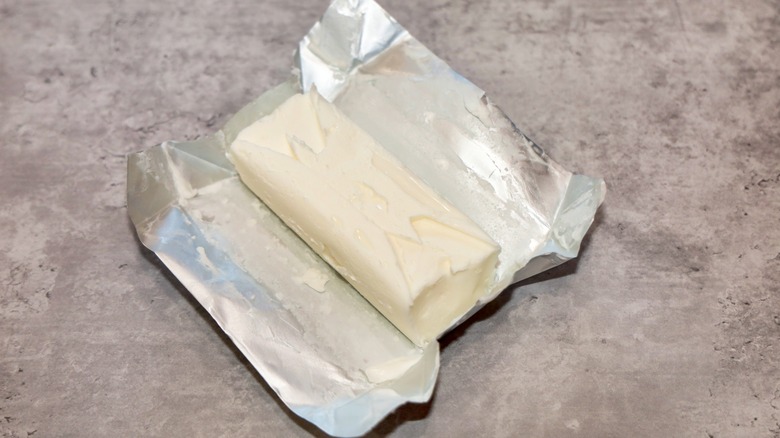Butter Vs Shortening: Christina Tosi Weighs In On What's Best For Pie Crust
Butter versus vegetable shortening is a rivalry that every home baker will have to contend with at some point in their lives. They are arguably the most popular fats for baking pie crusts with (although an honorable mention must be given to our good old friend, lard). You're bound to see them used interchangeably in many popular pie recipes, which can make them seem like practically identical ingredients. However, there are differences between the baking properties of butter and shortening, and they're essential to know if you want to perfect your pie skills.
To help parse the butter versus shortening debate, Chowhound reached out to one of baking's biggest stars, Christina Tosi, chef and founder of Milk Bar Bakery. She feels that the choice of fat in baking isn't cut and dry, and the best option actually varies. "Depends on what I'm using the pie crust for," the MasterChef judge explained.
The simplest approach to the problem, according to Tosi, is, "when in doubt, do half and half," which will accomplish the best of both worlds. However, if you want to focus on either butter or shortening, you should know how each ingredient affects your baked goods, and which kinds of pie they are best suited for.
Baking pie crusts with butter
Although we now use the term "shortening" almost exclusively in reference to vegetable shortening, butter is actually a type of shortening as well. In baking, the term "shortening" refers to any kind of fat that makes a dough "short," which is old baker's lingo for flaky. Butter isn't quite as effective at achieving a flaky crust compared to other types of shortening like vegetable shortening or lard. This is because butter — which is made of milk fat consolidated from cream — is about 80% fat, whereas shortening and lard are 100% fat. However, butter brings a different strength to the table: flavor.
Christina Tosi says, "I go all butter if it will lend itself to flavor," citing rich dishes like peanut butter pie and quiche as prime examples. Butter will bring a rich flavor to your pie crust, and at the same time, it will elevate the flavors of other rich ingredients like chocolate and spices. Butter also contains a small amount of milk solids, which caramelize as the pie bakes. Consequently, pie crusts made with butter tend to show better browning than pie crusts baked with shortening. For the best butter-based crust, keep fat in mind. Fat is one of the most important label clues on butter, and higher fat content makes for a flakier pie crust.
Baking pie crusts with vegetable shortening
Christina Tosi says she prefers using shortening in her pie crust for "something more fruity," emphasizing bright flavors like sour cherry. This works because vegetable shortening is a neutral fat, meaning it has no perceivable flavor of its own. This is a better choice when you are dealing with light, fresh flavors like fruit, which might be overwhelmed by the rich flavor of butter. However, vegetable shortening won't lend any flavor to the crust.
Vegetable shortening also helps to achieve a flakier crust compared to butter. That's because vegetable shortening, which is simply hydrogenated vegetable oil, is 100% fat. This is very important for pie crusts because fat inhibits gluten development. Although great for bread, gluten is a terrible thing for pie crusts because it makes baked goods chewy. Being entirely composed of fat, shortening is also more stable than butter and can effectively hold pockets of air. That's why shortening is the secret to fluffy frosting, and it creates gaps of air that help to form layers of flakiness within the crust. What you sacrifice in flavor, you gain in texture. And of course, if you can't decide which to prioritize, you can follow Tosi's advice and use a 50-50 mix.


